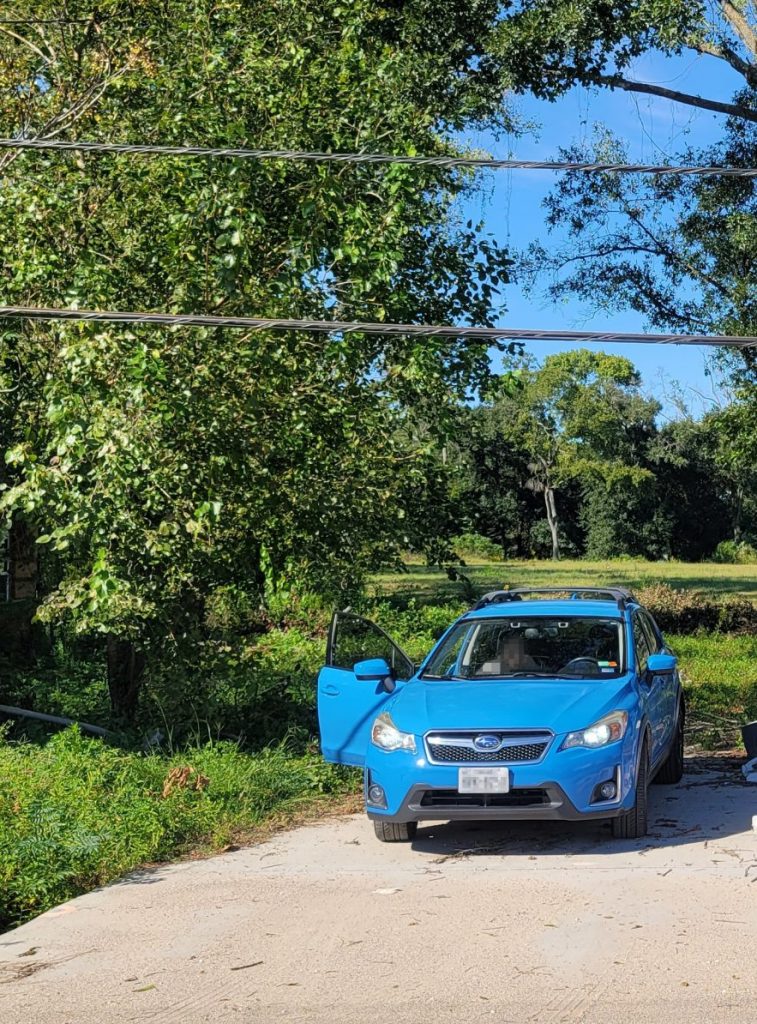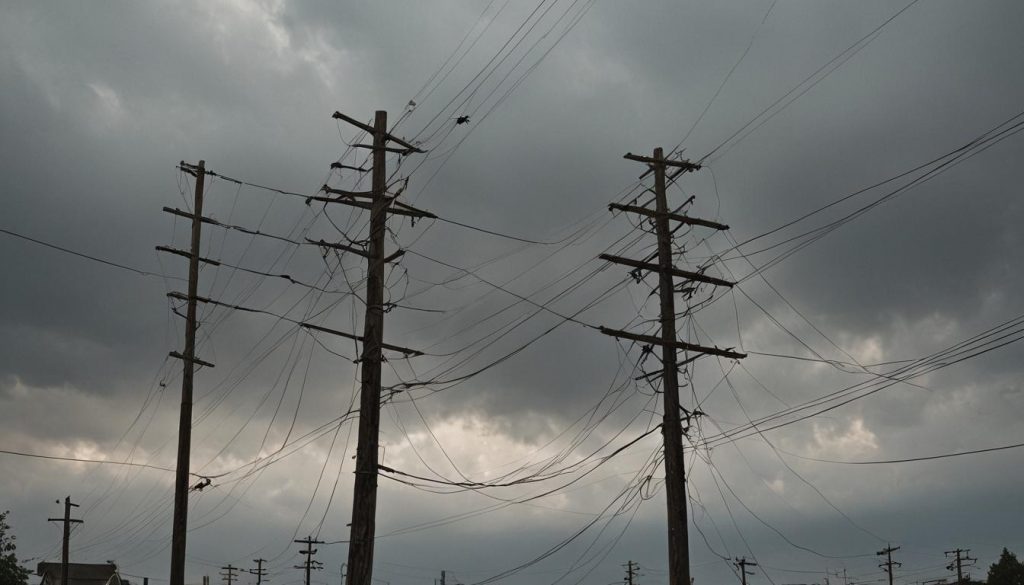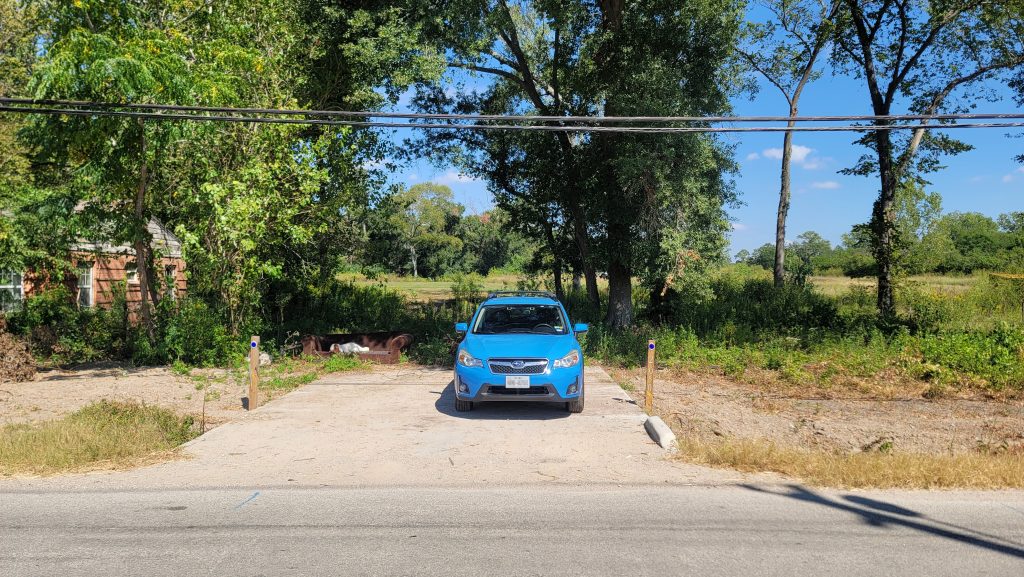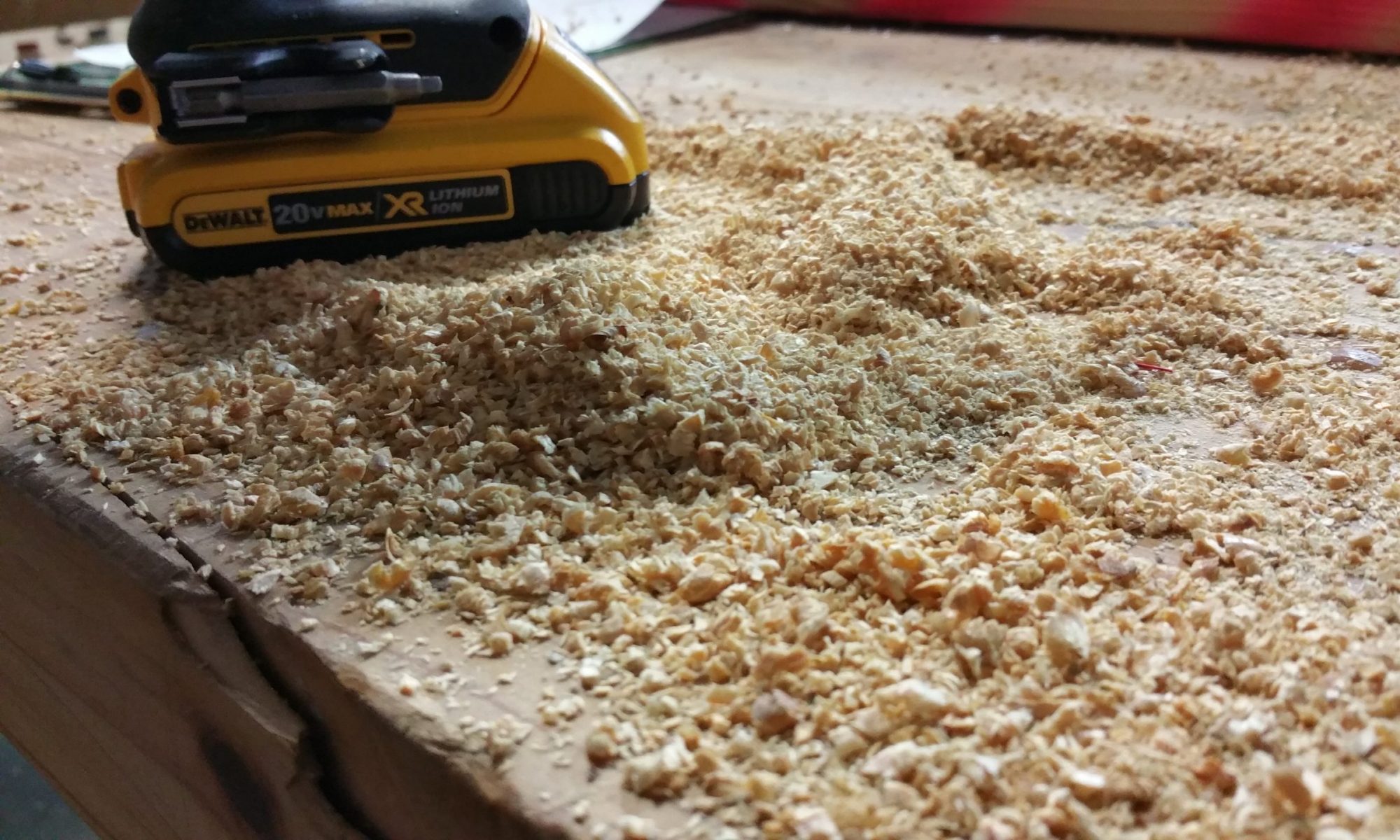Summary
Trying to get a low-hanging data wire fixed by the company take 18 months to resolve.
The dirt guy can’t get his trucks onto my property in order to deliver the dirt because the trucks won’t fit under the wires.
It turns out the telephone wire hangs too low over the driveway. I estimated it is about 10′ above the driveway, and code is 15′. Even the tiny house wouldn’t fit (it is 13’6″).
Before I purchased the property, there was no driveway so it is understandable why it was never noticed or corrected.

I called 311 (city services). They inform me the city doesn’t own telephone poles, thus thanks to the magic of privatization, they cannot help me. They suggest contacting either Centerpoint (who own the poles) or AT&T (owners of the data wires), or both.
Centerpoint: get lost, pal

Centerpoint tells me the wires on top of the pole are power and they maintain them. The lower wires don’t belong to them (that part of the pole is leased to other companies), so they aren’t responsible. So sad, too bad.
Telephone poles are divided into zones, with the higher the zone, the more dangerous the wire. Wires on the very top carry the most voltage, and wires on the bottom carry the least.
Nevertheless, it isn’t advisable to go around playing with any wires: the wrong voltage can kill you.
AT&T – Cower Before Us

The lower wires are the ones blocking my access, which means telecom. Upon calling AT&T (motto: “We make it hard so you’ll stop bothering us!”) the automated phone system helpfully suggests using their website “for faster service”.
Going to the page, I’m unable to do anything as the problem reporting tool assumes you are a customer, and keeps asking for my account number.
Back to the phones!
After being on hold for a while, it takes three transfers to get me to the right person. Each time I have to explain that I’m not a customer, my property is not a building, and this is about not about downed lines.
Finally, I get to the right person, explain the situation and they tell me they’ll send out a repair tech.
A month later and the work is still not done so I call again. The tech calls me the next morning saying he’s at the site, can verify the lines are sagging. He can’t raise them high enough because the telephone pole is leaning. You know, the pole they don’t own and have no control over. He says he’ll tighten the line and try to get Centerpoint to come fix their pole. I’m not going to hold by breath.
Try the PUC?
In desperation, I search for a solution online and discover there is actually a state Public Utilities Commission! The point me to the City’s Administration and Public Affairs department. There isn’t a formal complaint procedure (‘contact the utility and then contact APA if you aren’t satisfied’), so I follow the state PUC’s procedure:
- Try to resolve the problem with the utility
- Document when, with whom, discussion notes and outcome of the call.
- After a sufficient time passes days (undefined, but I assume 20), contact the PUC
- If the complaint is legit and documentation indicates a good-faith effort to resolve, the PUC will contact the company.
- The company has 15 days to respond to the PUC.
- The PUC will investigate and determine if there was any legal malfeasance.
- If the company is at fault, fines will be assessed.
Step 1 – contact AT&T (again)
The last time I contacted AT&T was over a month before, so I contacted them again, documented who I spoke with, the date and time, and took notes about what was said.
Step 2 – wait
The clock starts and I make note of when I need to verify the work still isn’t done. A week before the deadline, I check the site and discover they finally fixed the wire!

Lessons Learned
Privatization has not resulted in lower prices and/or better service. It has resulted in higher prices and 💩 service. But freedom, I guess, whatever.
Next time, I’ll follow the PUC procedures, stay on top of it and hopefully that will result in a faster fix. All told, it took about 18 months to get this resolved.
